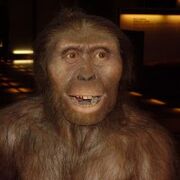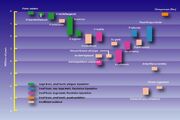The free online dictionary (2008) describes a hominid as, “A primate of the family Hominidae, of which Homo sapiens is the only extant species”.
Hominids are believed to be the transition stage between humans and apes. Fossil evidence has been collected and compared to determine the “truth” about hominids and their place on a phylogenetic tree.

In a study conducted by Ponc de Leon and Zollikofer (2001), they looked at the skulls and jaws of current species humans to hominids found around the world. They found that there were many similarities and supporting evidence to show that there is sufficient evidence for the divergence of humans and hominids at the species lever (Ponc de Leon & Zollikofer, 2001).
A study conducted by Mitteroecker and Bookstein (2008) found that the differences in fossils could be due to evolutionary alterations. It was found that morphological differences among humans, chimpanzees, and gorillas have been an effect of evolutionary changes of both common and local developmental factors.

Homonids.(2008). The Free Online Dictionary. http://www.thefreedictionary.com/hominid
Mitteroecker, P. & F. Bookstein. (2008). The evolutionary role od modularity and integration in the hominoid cranium. Evolution 62(4). 943–958.
Ponce de Leon, M. & C. Zollikofer.(2001). Neanderthal cranial ontogeny and its implications for late hominid diversity. Nature.412(6846).534-538.